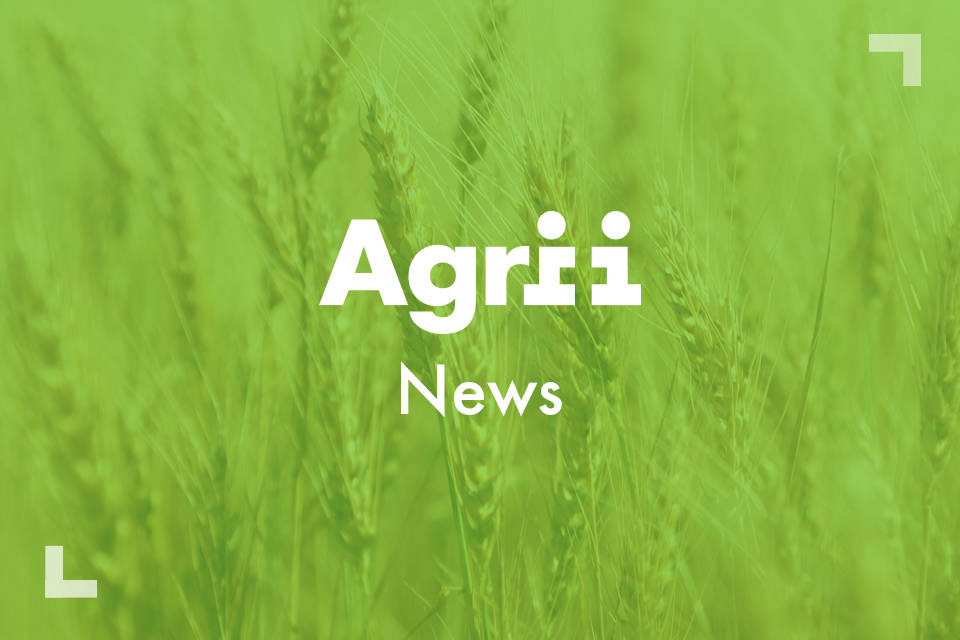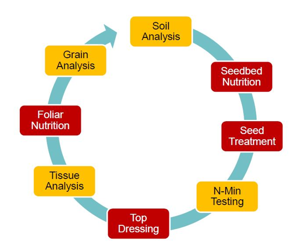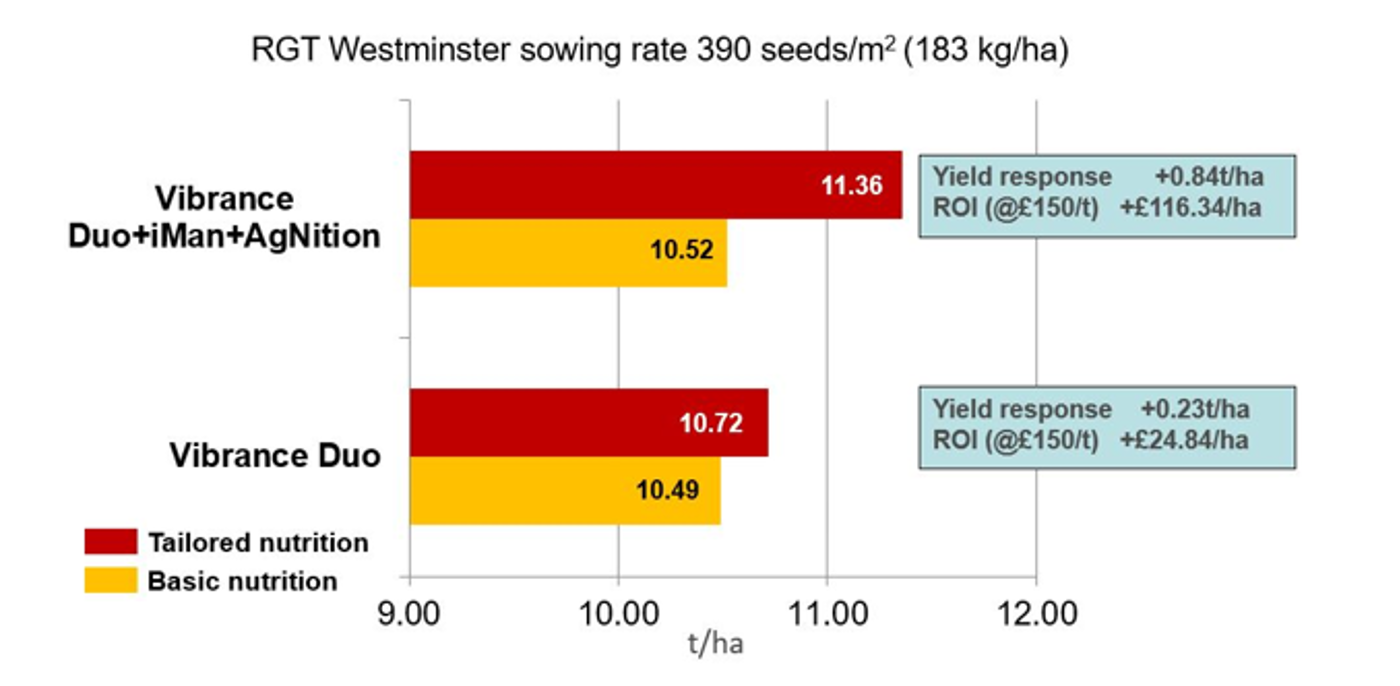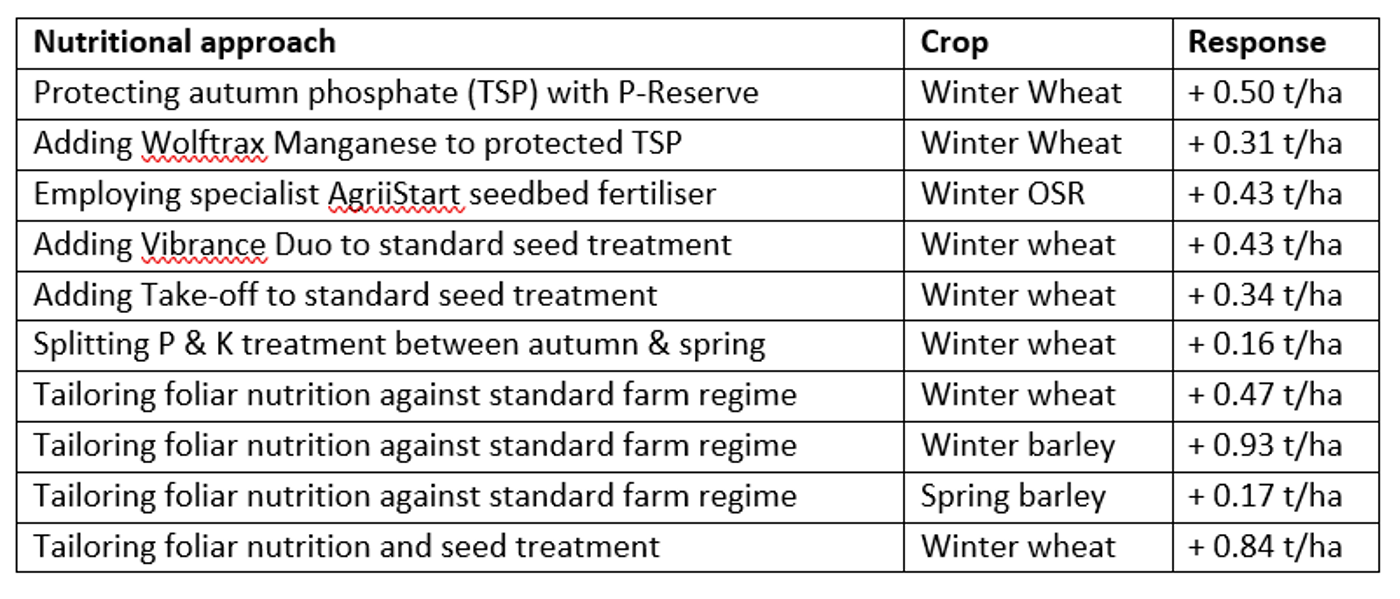
Tailoring Nutrition for Greater Crop Resilience
News - 20.08.20
Tailoring Nutrition for Greater Crop Resilience
Feed the plant not the soil. Do this as precisely as you can. And make sure you get things right early on.
These are the three keys to getting the most out of the much more tailored approach to crop nutrition experienced researcher, Jim Carswell sees as one of today’s biggest opportunities for improving arable performance and sustainability.
“Better nutrition can’t replace crop protection in dealing with weed, pest and disease problems,” stresses the Agrii R&D manager. “Nor can it make-up for serious inadequacies in soil structure or health.
“All the trial work I’ve been involved with for more than 30 years now, however, convinces me that better-managed nutrition is crucial to securing the greater resilience – both economic and environmental – we need in our future crop production.
“Nitrogen is our biggest input and there are lots of things we can do to improve the efficiency with which we use it – including urease and nitrification inhibitors and variable application. But I believe NUE should really stand for Nutrient Utilisation Efficiency, because we have at least as much – if not more – to gain from using the whole range of other plant nutrients better. Which will, in turn of course, improve the way our nitrogen is used.
“By protecting the autumn TSP we apply so it’s more available for longer, for example, we know we can increase winter wheat yields by half a tonne a hectare ; and not just on low P index soils either. What’s more, adding a manganese coating can increase this advantage to over three quarters of a tonne for a return on investment of more than £120/ha.
“Over the past four seasons, we’ve also seen highly economic responses to specialist zinc, copper and manganese seed dressings as well as physiology-enhancing treatments that give better rooting for greater early nutrient uptake.
“Add in the substantial yield and margin benefits our trials show from fresh available P & K in the spring as well as the autumn and the best targeted foliar nutrition and the case for far greater attention to nutrient management is compelling,” he insists.
Although Jim Carswell has no doubt that feeding the plant rather than the soil is the primary key to such performance improvements, a decent soil analysis remains his vital starting point, with N-Min testing another important aid.
Pointing out that you can’t manage what you can’t measure, he sees tissue testing to modern growth stage and performance level benchmarks as equally essential. And several years of trial work have shown him the value of grain analysis in planning for the future on the basis of actual crop experience.
“We must get away from the basic P, K and pH approach to soil analysis, though,” he says. “Instead, a broad-spectrum analysis of all 12 macro and micro-nutrients is essential to identify the basic resource we’re working with and any interactions likely to limit crop uptake. Laser soil texturing can also tell us a lot about how best to manage our nutrition, and the latest biological assessments can be very valuable tools too – providing they are done in the spring when there’s sufficient moisture, that is.
“I’m also a big believer in N-Min testing to inform top dressing. Available N levels ahead of OSR at our Fife iFarm varying from 15.7 kg/ha to 149.9 kg/ha over the past seven years are, for instance, something we ignore at our peril.
“The graphical benchmarking tissue test reporting system we have developed with Lancrop to replace the historic and very limited single guideline traffic light approach is transforming its value for agronomists and growers. At the same time, analysing the grain of particularly encouraging or disappointing crops is something we’ve been finding more and more useful in fine-tuning our nutrition.”
From his long-standing research at Agrii’s Bishop Burton Technology Centre and iFarms across northern England and Scotland, Mr Carswell identifies four particularly fruitful areas for improving crop nutrition – seedbed fertilisation, seed treatment, spring top dressing and foliar feeding.
Although each of these offers considerable extra crop performance value, he sees the big prize coming from a tailored approach throughout the season involving all four elements informed by the most effective soil, tissue and grain analyses (Figure 1).

Because most soils lock-up the nutrient in one way or another regardless of their pH, it makes sense to apply P-Reserve protected phosphate in the spring as well as the autumn. In exactly the same way, it is only sensible to protect urea nitrogen top dressings by using OEN or Liqui-Safe to very substantially reduce both ammonia and nitrous oxide emissions and leaching. As is balancing key micro-nutrients with well-formulated foliar feeds wherever and whenever they are needed.
“Our research shows better top dressing and foliar feeding are likely to give you by far the greatest benefit if you get your nutrition right from the start,” reports Jim Carswell. “I’ve always seen sowing day is the most important day in a crop’s life. And it certainly is nutritionally.“Feeding to address any nutritional gaps and nutrient interactions at this stage is crucial in maximising early crop growth and development to set up the crop’s yield potential and enable it to cope with challenging conditions.
“Ideally, I would drill or place fertiliser with the seed to optimise early root uptake, making available phosphate the priority (along with nitrogen for OSR). Manganese and zinc are also important considerations here with most soils and crops; copper is vital where soils are deficient; and boron is invariably worth thinking about with OSR.
“The chelating ability of P-Reserve seems to free-up these micro-nutrients as well as protecting phosphate in both high and low pH soils, so combining it with a Wolftrax trace element coating can be doubly valuable.
“If you don’t have a combi-drill, then your best approach would probably be to incorporate protected phosphate ahead of drilling then use specialist high load seed dressings like iMan (Mn), Zax (Zn) or Agnition (Cu) that make their nutrients available through the seed coat as well as to the young roots.
“It’s probably one approach or the other in most cases, but there’s a strong argument for using both with the later-drilled wheats that invariably profit from greater early nutritional support.”
Jim Carswell and his team find combining a nutritional seed treatment with the early root and stem development boost of a physiological seed dressing gives greater value than either alone. That this isn’t necessarily apparent without well-balanced subsequent nutrition is underlined in recent iFarm work.
In this case, wheat showed little, if any, response to combining Vibrance Duo with iMan and AgNition under the basic farm nutrition programme. In marked contrast, tailored foliar feeding added 0.23t/ha to the Vibrance Duo treatment but 0.84t/ha where the three seed treatments were employed together (Figure 2).

“The technical seed treatments clearly set-up a greater yield potential here,” he concludes. “However, this can only be realised with the right in-crop nutrition. It just underlines the importance of tailoring the whole nutritional approach from start to finish for the best results.”
Yield Responses from Recent Agrii Nutrition Research
(Recent Examples)

Join Our Community

Agrii X
We love engaging with clients and partners. Give us a follow and let's share stories for the community.

Agrii Instagram
A picture paints a thousand words. Follow us on Instagram to see what we are up to.

Agrii Facebook
Follow us on the worlds biggest social media site for the latest news and events straight to your feed.

Agrii LinkedIn
If you are all about the business, connect with us on LinkedIn to build your network
Stay In Touch

Journal Sign-Up
Receive email updates on topical news and information from around Agrii and UK Farming.

Listen To Our Podcasts
Listen to the Tramlines Podcast. Fortnightly chat about agriculture and trials with your host Tony Smith.

Agrii Insights
Read essential agri intelligence for profitable farming.

Find an Event
Join us for our upcoming events and tours.



